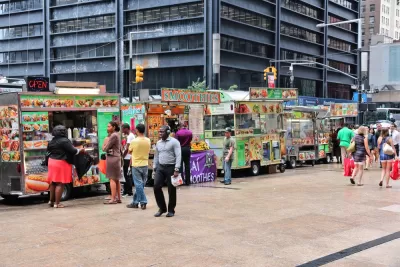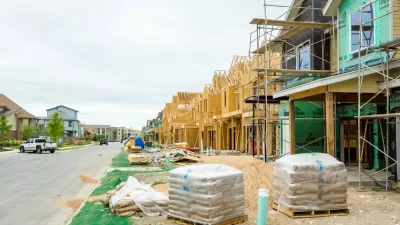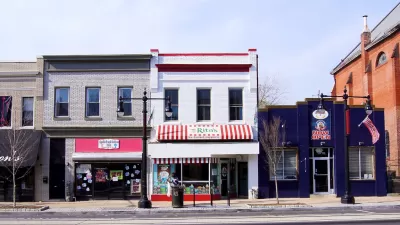Research into previous pandemics, like SARS in 2003, the Spanish Flu in 1918, and the early months of COVID-19 in China, offers insight into what to expect for the economy and the housing market during and after the current pandemic.

Writing for Zillow, Svenja Gudell shares the results of a “deep dive into past research and data on the economic effects of global pandemics to help provide perspective on what the future could hold under various scenarios.” The past research shared here tends to focus on economic output and the housing market, noting that the effect of the coronavirus pandemic is likely to differ from a “standard recession.”
Among the precedents considered in previous literature, mentioned here by Gudell, is the SARS outbreak in 2003: “During SARS, Hong Kong house prices did not fall significantly, but transaction volumes fell by 33-72% as customers avoided human contact (‘avoidance behavior’ like avoiding travel, restaurants, and public gatherings). After the epidemic was over, transactions snapped back to normal volumes.”
A similar narrative is already apparent in China’s experience with coronavirus earlier in the year: “Meanwhile, during the current episode in China, news reports and early data provided by Goldman Sachs (2020) indicate a near-shutdown in the volume of Chinese real estate transactions, although there is not yet a clear effect on real estate prices,” write Gudell.
One caveat about sharing this literature, and Gudell’s explanation of its findings, is that the article was published on March 13, when shutting down entire cities was still a hypothetical scenario, rather than a widespread scenario. That means that some of the less aggressive scenarios discussed no longer provide the floor of expectations for the economic effect of the pandemic.
FULL STORY: Information From Past Pandemics, And What We Can Learn: A Literature Review

Manufactured Crisis: Losing the Nation’s Largest Source of Unsubsidized Affordable Housing
Manufactured housing communities have long been an affordable housing option for millions of people living in the U.S., but that affordability is disappearing rapidly. How did we get here?

Americans May Be Stuck — But Why?
Americans are moving a lot less than they once did, and that is a problem. While Yoni Applebaum, in his highly-publicized article Stuck, gets the reasons badly wrong, it's still important to ask: why are we moving so much less than before?

Research Shows More Roads = More Driving
A national study shows, once again, that increasing road supply induces additional vehicle travel, particularly over the long run.

Judge Halts Enforcement of Anti-Homeless Laws in Grants Pass
The Oregon city will be barred from enforcing two ordinances that prosecute unhoused residents until it increases capacity and accessibility at designated camping sites.

Advancing Sustainability in Los Angeles County Schools
The Los Angeles County Office of Education’s Green Schools Symposium brings together educators, students, and experts to advance sustainability in schools through innovative design, climate resilience strategies, and collaborative learning.

Using Old Oil and Gas Wells for Green Energy Storage
Penn State researchers have found that repurposing abandoned oil and gas wells for geothermal-assisted compressed-air energy storage can boost efficiency, reduce environmental risks, and support clean energy and job transitions.
Urban Design for Planners 1: Software Tools
This six-course series explores essential urban design concepts using open source software and equips planners with the tools they need to participate fully in the urban design process.
Planning for Universal Design
Learn the tools for implementing Universal Design in planning regulations.
City of Moreno Valley
Institute for Housing and Urban Development Studies (IHS)
City of Grandview
Harvard GSD Executive Education
NYU Wagner Graduate School of Public Service
City of Cambridge, Maryland
Newport County Development Council: Connect Greater Newport





























